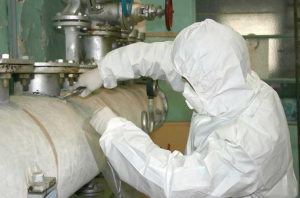Enhancing Architectural Detail: Architraves as a Design Statement
In architectural design, the smallest elements often carry the greatest impact. Among these, architraves stand out as subtle yet transformative components that enhance the aesthetic and structural harmony of interiors. Traditionally associated with doorways, windows, and ceilings, architraves have evolved from simple functional trims into deliberate design statements that define the character of a space.
An architrave is a molded frame that surrounds openings such as doors and windows, providing a visually appealing transition between walls and these elements. While historically serving to conceal gaps or uneven edges, modern design treats architraves as an opportunity to introduce style, rhythm, and proportion into a room. By carefully selecting profiles, materials, and finishes, architects and interior designers can elevate what might otherwise be overlooked detailing into a focal point of the interior.
The choice of material plays a significant role in how architraves influence a space. Traditional timber remains a popular choice, appreciated for its warmth, texture, and ability to be painted or stained to complement the surrounding décor. More contemporary interpretations utilize engineered wood, MDF, or even metal to achieve sleek, minimalist lines or to withstand high-traffic areas without compromising visual appeal. Each material brings a different tactile and visual experience, allowing designers to align the architrave with the overall theme of the interior, whether classic, modern, or eclectic.
Profiles and shapes of architraves offer another dimension of design flexibility. Simple, clean lines create a minimalist and contemporary feel, emphasizing the geometry and flow of a space. Ornate, layered, or detailed profiles evoke a sense of tradition and grandeur, adding depth and texture to otherwise plain walls. Even subtle variations in thickness or edge detailing can create a rhythm along corridors or around repeated architectural elements, contributing to a cohesive and intentional design language.
The strategic use of color and finish enhances the impact of architraves further. Painting architraves in a contrasting color can frame doors and windows as visual highlights, drawing attention to key features or entrances. Conversely, blending architraves seamlessly with wall tones creates a continuous, understated elegance, allowing other design elements to take prominence. Matte, glossy, or textured finishes provide additional nuance, offering designers the ability to play with light, shadow, and perception in subtle ways.
Beyond aesthetics, architraves also carry functional benefits that support long-term durability. They protect edges from wear and tear, prevent wall damage, and contribute to a polished, refined look that signals attention to detail. In doing so, they reinforce the idea that good design is not only about bold statements but also about meticulous consideration of every element, no matter how small.
In contemporary interiors, architraves have transcended their utilitarian origins to become deliberate expressions of style. By blending thoughtful material choices, profiles, and finishes, designers can craft spaces that feel cohesive, intentional, and visually compelling. More than just frames around openings, architraves serve as architectural punctuation marks, highlighting transitions, enhancing proportions, and elevating the overall design narrative of a home or commercial space.






